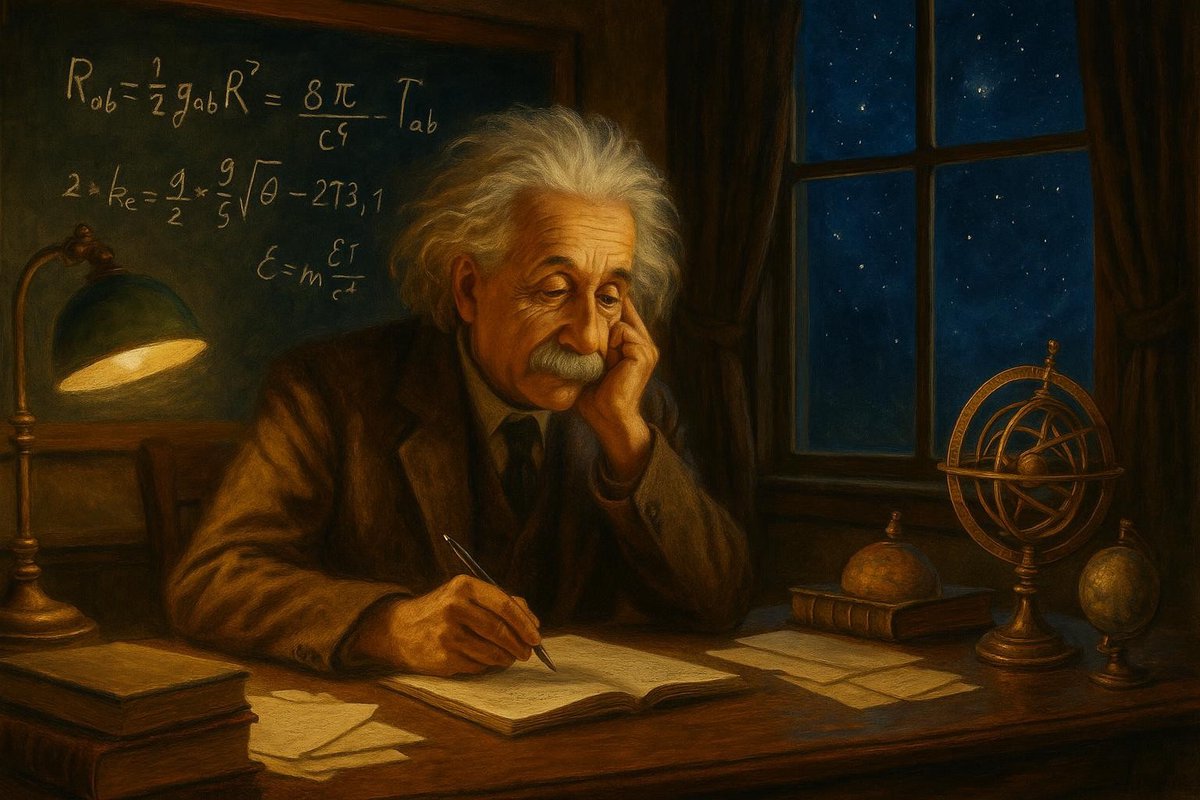
The Problem Context: Rethinking Gravity
Imagine a world where the force of gravity isn’t just a pull but a complex dance between massive bodies and the fabric of spacetime. Such a notion was almost inconceivable in the early 20th century. For centuries, Newton’s law of universal gravitation had stood unchallenged, describing gravity as an invisible force pulling objects toward one another. This explanation, while brilliantly predictive, left many questions unanswered—such as the nature of this mysterious force. Enter Albert Einstein, whose curiosity and relentless pursuit of knowledge led him to rethink gravity altogether.
- Newton’s law viewed gravity as an invisible force acting at a distance.
- Einstein sought a deeper, more fundamental explanation beyond force interaction.
- He was driven by the anomalies observed in planetary motions, notably Mercury’s orbit.
Interestingly, these observations didn’t quite align with Newtonian predictions, sparking a need for a new framework. In a world recovering from the upheavals of World War I and riding the wave of technological progress, Einstein’s revolutionary ideas found fertile ground.
Theoretical Breakthrough: Geometry of Spacetime
Albert Einstein, with his penchant for deep conceptual thinking, proposed a radical idea in 1915. He suggested that gravity wasn’t a force but a curvature of spacetime itself, a fabric that could be bent by massive objects. This was not merely a shift in perspective but a transformation of the very canvas upon which the universe was painted. Einstein’s genius lay in his ability to visualize and mathematically express such abstract concepts.
- Gravity as a curvature: massive objects like stars and planets bend spacetime around them.
- Objects follow the natural paths—geodesics—determined by this curvature.
- Einstein’s field equations elegantly linked geometry and gravity.
Of course, translating such a revolutionary idea into mathematical language was no small feat. Yet, Einstein persevered, driven by his insatiable curiosity and a profound belief in the power of mathematical beauty and elegance.
Supporting Evidence: Observations and Experiments
Einstein’s theory, while captivating, demanded empirical validation. In 1919, an expedition led by Sir Arthur Eddington provided this when they observed a total solar eclipse. Eddington’s team confirmed that light from distant stars was indeed bent around the sun, a phenomenon predicted by General Relativity but inexplicable by Newtonian physics. This pivotal moment thrust Einstein into the limelight and cemented his theory as a cornerstone of modern physics.
- The 1919 solar eclipse: the first major experimental test of General Relativity.
- The deflection of starlight confirmed spacetime curvature.
- Einstein became an international scientific icon overnight.
These observations were more than a mere scientific triumph; they were a testament to human ingenuity and the pursuit of truth. They also ushered in an era where empirical evidence became the bedrock upon which theoretical physics would build.
Modern Relevance: The Legacy of General Relativity
General Relativity has proven incredibly robust, with applications ranging from GPS technology to understanding black holes and the expanding universe. As time goes on, its relevance only grows. This theory forms the backbone of cosmology and astrophysics, influencing how we understand the universe at its most fundamental level.
- GPS technology relies on relativistic corrections for accuracy.
- Black hole physics: a direct application of Einstein’s equations.
- The theory supports the Big Bang model and cosmic expansion.
No wonder Einstein’s insights continue to inspire scientists and laypeople alike. His work exemplifies how a bold shift in perspective can illuminate the hidden workings of the universe.
In conclusion, Einstein’s General Relativity wasn’t just a scientific breakthrough; it was a paradigm shift in our understanding of the universe. His approach, marked by intellectual courage and a willingness to question established norms, remains a guiding star for those who seek to unveil nature’s deepest secrets.
Fuel Someone Else’s Curiosity
If this exploration of Einstein’s legacy has sparked your interest, share it with others who might be equally fascinated. Discussing such profound ideas not only enriches our own understanding but also inspires others to look at the world through the lens of curiosity and wonder. Together, we can continue to explore the mysteries of the universe, just as Einstein once did.

Leave a Reply